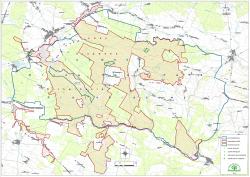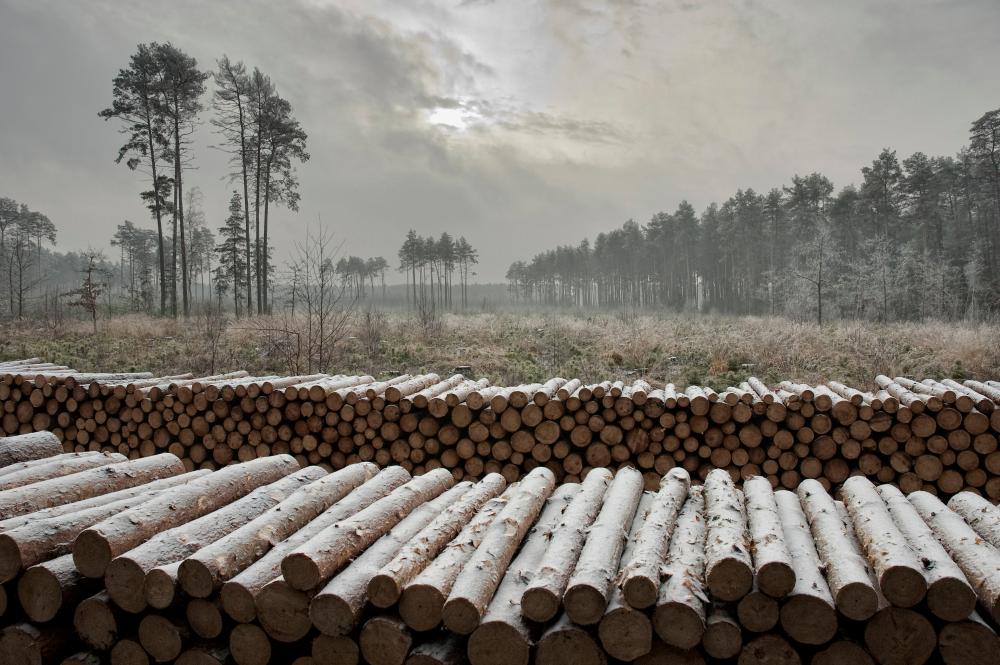 Asset Publisher
Asset Publisher
Sale conditions
Sale conditions of wood are specified by the regulation of Director – General of the Sate Forests.
Within the framework of the individual sale , the foresters try to meet the fast growing demand, because more and more people use wood in order to heat their houses. Contrary to general opinion, these are not only village people, even though they prevail among recipients. The growth of firewood demand is the result of occurrence of new housing estates built in the suburbs of large agglomerations, where houses are usually equipped in fireplace heating installations.
Firewood is not only the most ecological heat source, but also is much more attractive in respect of relation of price and electric efficiency, rather than cola, oil, gas or electric power.
In recent years, the Sate Forests increased the sale of firewood of one third – up to over 4 million cubic meters annually. Firewood is not only the most ecological heat source, but also is much more attractive in respect of relation of price and electric efficiency, rather than cola, oil, gas or electric power. Some of customers choose already prepared and cut into pieces wood, the others very willingly obtain it by themselves after arranging all details and fulfilling particular safety conditions, and after paying the fee; that concerns mainly so called "thinnings". Such a raw material is very cheap, that is why many people from village areas profit from such possibility.
 Asset Publisher
Asset Publisher
 Asset Publisher
Asset Publisher
Cisowsko- Orłowiński Park Krajobrazowy
Cisowsko- Orłowiński Park Krajobrazowy
 Mapa Cisowsko- Orłowińskiego Parku Krajobrazowego, źródło: Usługi Ekologiczne A. Przemyski
Mapa Cisowsko- Orłowińskiego Parku Krajobrazowego, źródło: Usługi Ekologiczne A. Przemyski
 Panorama Pasma Cisowskiego fot. P. Suchanek
Panorama Pasma Cisowskiego fot. P. Suchanek
 Jesienna odsłona Lasów Cisowskich fot. P. Suchanek
Jesienna odsłona Lasów Cisowskich fot. P. Suchanek
 Urokliwe okolice Cisowa fot. P. Suchanek
Urokliwe okolice Cisowa fot. P. Suchanek
Cisowsko- Orłowiński Park Karjobrazowy jest jednym z największych w regionie, obejmuje wraz z otuliną blisko 450 km kwadratowych typowego świętokrzyskiego krajobrazu
Cisowsko-Orłowiński Park Krajobrazowy został utworzony 10 czerwca 1988 roku. Jego powierzchnia wynosi 207,06 km², a otulina 237,48 km². Stanowi on południowo-wschodni fragment Zespołu Parków Krajobrazowych Gór Świętokrzyskich. Ograniczony jest od północnego-zachodu i od północy doliną rzeki Belnianki, od wschodu doliną Łagowicy, od południa doliną Czarnej Staszowskiej i od południowego-zachodu doliną Pierzchnianki. Teren Parku przecinają pasma: Orłowińskie, Cisowskie i Ociesęckie oraz Wzgórza Bardziańskie.
Park utworzono w celu ochrony cennych zasobów przyrodniczych i krajobrazowych, przede wszystkimdla ochrony i zachowania naturalnego kompleksu torfowisk różnych typów i w różnych stadiach rozwojowych, z cennymi zespołami roślinności bagiennej oraz czystości wód rzeki Czarnej Staszowskiej.
Na terenie Parku znajdują się
Ø 4 rezerwaty przyrody : „Zamczysko", „Białe Ługi", „Cisów", „Słopiec";
Ø 25 pomników przyrody;
Ø 6 użytków ekologicznych;
Ø 1 stanowisko dokumentacyjne - pozostałości górnictwa rud żelaza;
Ø 3 zespoły przyrodniczo- krajobrazowe: „Ostra Górka", „Dolina Łagowicy", „Wąwóz Dule - Jaskinia Zbójecka";
Ø 1 Obszar Natura 2000 - Specjalny Obszar Ochrony (SOO) Lasy Cisowsko-Orłowińskie (PLH 260040).








